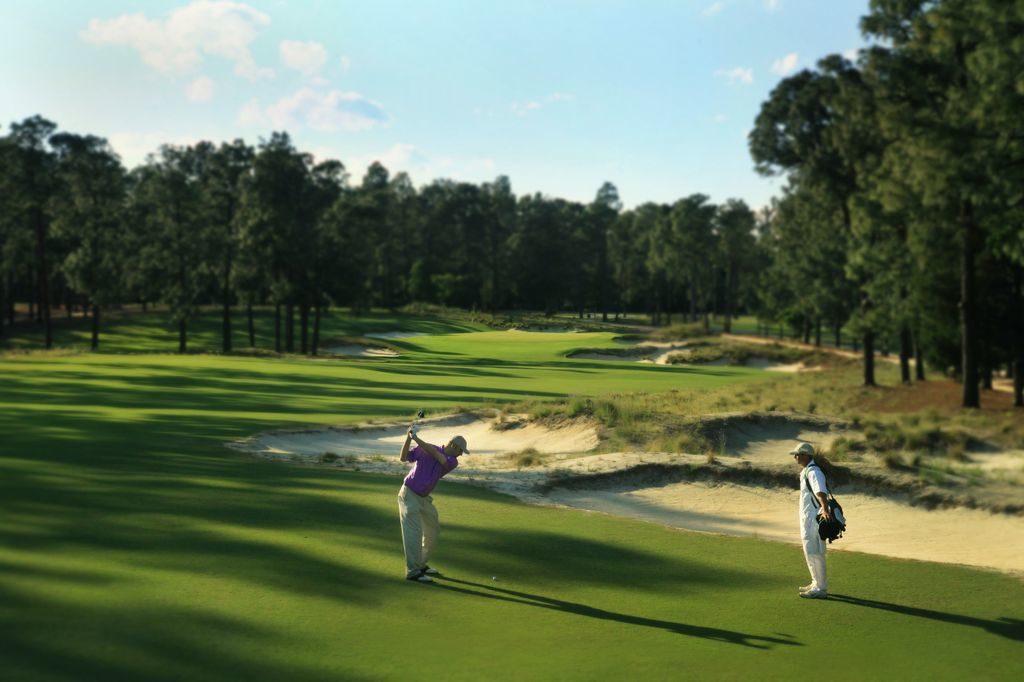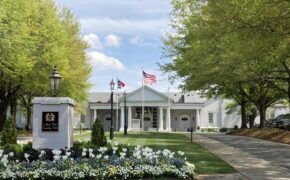Golf courses close — and developers see green

The Carolinas are widely known for golf, from historic Pinehurst to the wide selection of courses by the beach to Charlotte’s annual Wells Fargo Championship.
As popular as you might think golf is around these parts, though, the sad truth is that there aren’t enough golfers to sustain all the courses. Many are closing — and developers are swooping in.
There are several reasons for the decline, from construction of courses that were built to sell houses instead of succeed on their own, to the waning of Tiger Woods’ popularity, to the lack of interest among young people. (Millennials can shoulder the blame for almost anything.) The number of golfers has fallen 20% since 2003.
story continues below
—
This piece originally appeared in the Aug. 12, 2019, edition of the Charlotte Ledger, a 3x/week e-newsletter on Charlotte business news. Sign up for free here:
—
A piece last week by Carolina Public Press dove into some of the numbers:
North Carolina’s 675,000 active golfers have 496 courses to choose from, 42 fewer than they had a decade ago, according to an analysis by Kelly Cederberg, a professional landscape architect who studies golf course redevelopment as part of her role as an adjunct faculty at the University of Arizona in Tucson.
Same for South Carolina, according to a piece this summer by the Charleston Post and Courier:
Closings of golf courses have been most common in Horry County, where so many courses are concentrated. About 20 courses have closed in recent years in the Myrtle Beach area, leaving about 80 courses to serve the area’s customers. Demand for golf rounds has not grown as quickly as the Myrtle Beach course inventory, said Terry Sedalik, executive director of the S.C. Golf Course Owners Association.
“They were overbuilt, obviously, for the cycle we’re in,” Sedalik said.
In many cases, golf courses built years ago now occupy prime real estate — land that is more valuable for shops and houses than for sand traps and putting greens. Around the Carolinas, developers are getting to work:
- In Ballantyne, Northwood Office has proposed converting parts of the golf course behind the Ballantyne hotel into a mix of apartments, shops and a town center design with an amphitheater and green space. The company is seeking a rezoning from the city for the plan.
- In east Charlotte, near I-485 and Albemarle Road, developer Meritage Homes bought the former Larkhaven Golf Club this year and plans to build about 350 homes on the site.
- In south Charlotte, developer Lincoln Harris is building Rea Farms, a massive mixed-use development, on land that was formerly Charlotte Golf Links. It closed in 2014.
- In Fort Mill, Meritage Homes is building housing on the former Regents Park course.
- Outside Charleston, neighbors are rebelling against developers’ plans to build more than 200 houses on the site of a golf course that closed last year, The Golf Club of South Carolina at Crickentree.
Thought bubble: This might sound like blasphemy, but will there ever come a time when it makes sense to redevelop golf courses closer to uptown? Courses are usually in the 120-200 acre range. They are green space, but they are not really open to most people. Think what might become of the land on Myers Park Country Club’s course. Or Charlotte Country Club’s in Plaza-Midwood.

